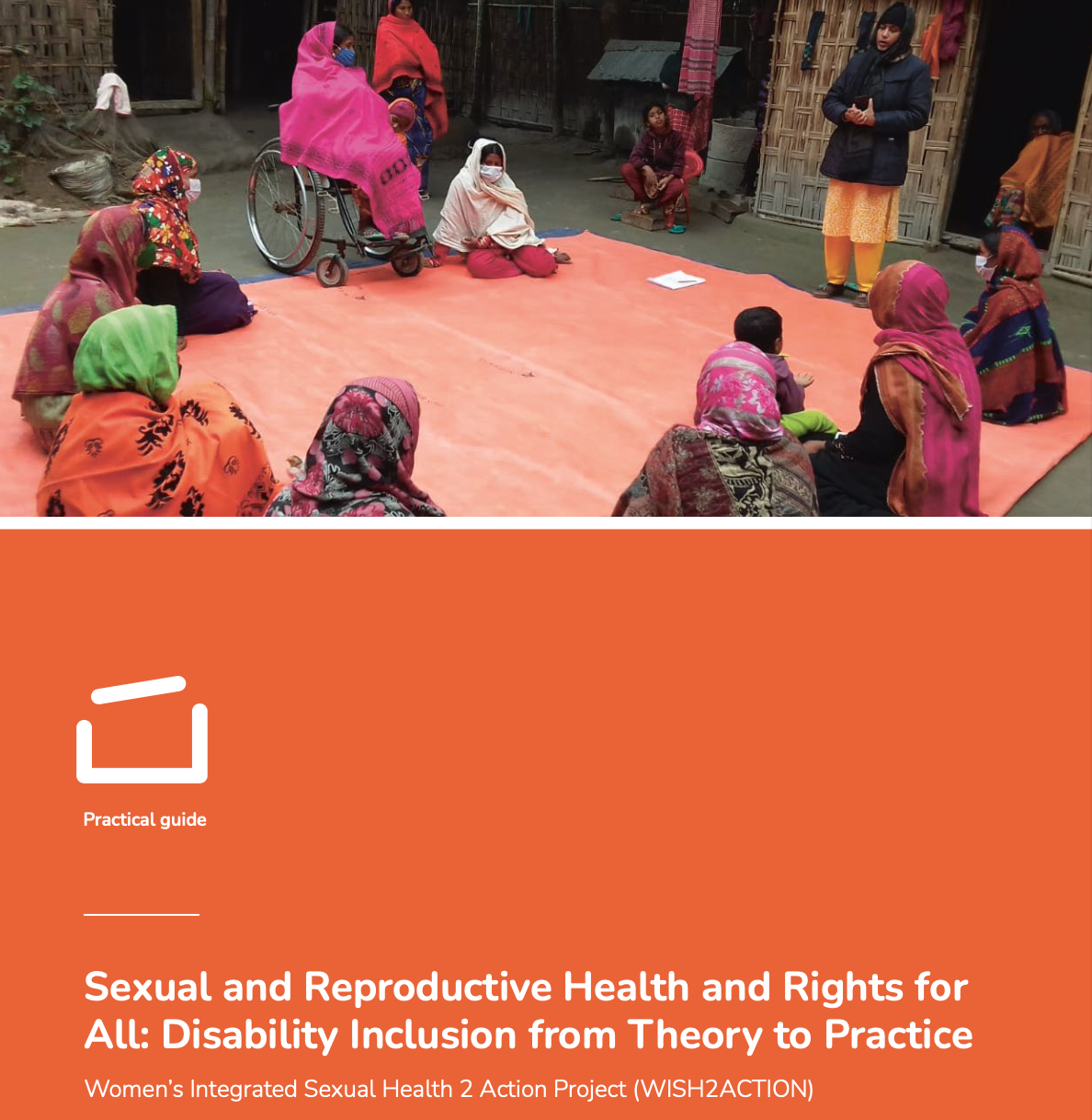Sexual and Reproductive Health and Rights for All: Disability Inclusion from Theory to Practice
In the most recent World Report on Disability published in 2011, the World Health Organisation and the World Bank estimated that one billion people worldwide are living with one or multiple disabilities, equating to around 15 per cent of the world’s population. It is estimated that one in five women has a disability. The number of children with disabilities globally has reached an estimated 240 million.
An estimated 80 per cent of persons with disabilities — approximately 745 million people — live in lower and middle-income countries (LMICs).vNearly seven million persons with disabilities are estimated to have been forcibly displaced by violence or conflict and many more have been disproportionately affected by disasters and the adverse impacts of climate change.
Persons with disabilities have the same sexual and reproductive health rights (SRHR) and needs as their non-disabled peers. Providing accessible and quality sexual and reproductive health (SRH) information, goods, and services to persons with disabilities is an obligation under international human rights standards, including the United Nations Convention on the Rights of Persons with Disabilities (CRPD) and the International Covenant on Economic, Social, and Cultural Rights (ICESCR). Indeed, a wide range of UN resolutions reaffirm the sexual and reproductive rights of persons with disabilities. The 74th World Health Assembly in May 2021 adopted a resolution recognising the rights of persons with disabilities to the highest attainable standards of health, including sexual and reproductive health.
The realisation of SRHR for all is also essential to fulfilling the Sustainable Development Goals’ mandate, to leave no one behind. Ensuring that quality health care services are available and accessible to the most vulnerable will benefit all those who may need sexual and reproductive health services, whether they are living with a disability or not. However, the data indicates that persons with disabilities have historically been denied access and agency to fulfil these rights. Persons with disabilities are much less likely to have access to comprehensive sexuality education and contraception, are less likely to be screened for sexually transmitted infections and HIV/AIDS, and are less likely to receive routine screenings for breast, cervical, and ovarian cancers, among other things. Women and girls with disabilities are also more likely to be forced into pregnancy or subjected to forced or coerced procedures, such as sterilisation, abortion, and contraception, and are more vulnerable to violence, including sexual violence.During pregnancy, women with disabilities have a higher risk of preterm birth, gestational diabetes, preeclampsia, and other complications.Inadequate information and a scarcity of accessible resources and services contribute to their vulnerability and the denial of agency and autonomy. These disadvantages begin early in life and continue throughout adulthood.
To advance the rights of persons with disabilities and reduce unmet needs for SRH information and services, Humanity & Inclusion (HI) has developed this Guideline to discuss inclusive practices in SRHR. Based on technical guidance put into practice during the WISH2ACTION 8 Sexual and Reproductive Health and Rights for All: Disability Inclusion from Theory to Practice project, the Guideline draws on HI’s long-term experience working alongside persons with disabilities at the global, regional, national, and local level to expand access to SRHR information and services and advocate for greater inclusion in the health sector.
The Guideline aims to provide practical guidance to enable health providers, local and national authorities, and others working in the health sector to ensure high quality and accessible rights based SRH information and services for all. It collects and shares relevant normative resources and standards as well as lessons learned, technical content, and tools HI has developed and tested working in partnership with persons with disabilities and their representative organisations. The Guideline also draws on technical resources developed by other organisations engaging in this field, such as the Women’s Refugee Commission, Sightsavers, and the International Rescue Committee, all of which are committed to assessing and improving accessibility and quality of services for persons with disabilities.
The Guideline is grounded in guidance and standards adopted by international normative bodies and is further enriched with input gathered during an extensive review and consultation process. It reflects insights from representatives of organisations of persons with disabilities, particularly women-led organisations, disability rights advocates, key WISH stakeholders, and technical experts in SRHR, gender equality, and the prevention of gender-based violence. Collectively, the case studies, best practice examples, technical tools, and other resources included in this Guideline are an important resource for those working to advance SRHR for all.
Read the full guideline here.
